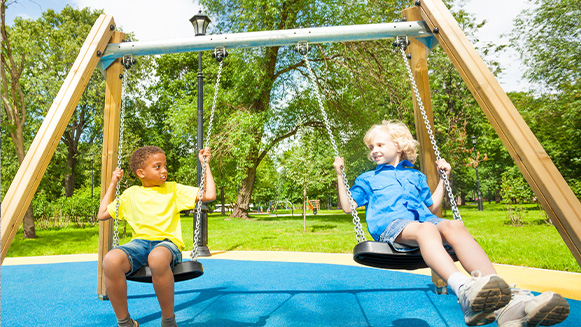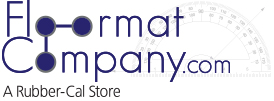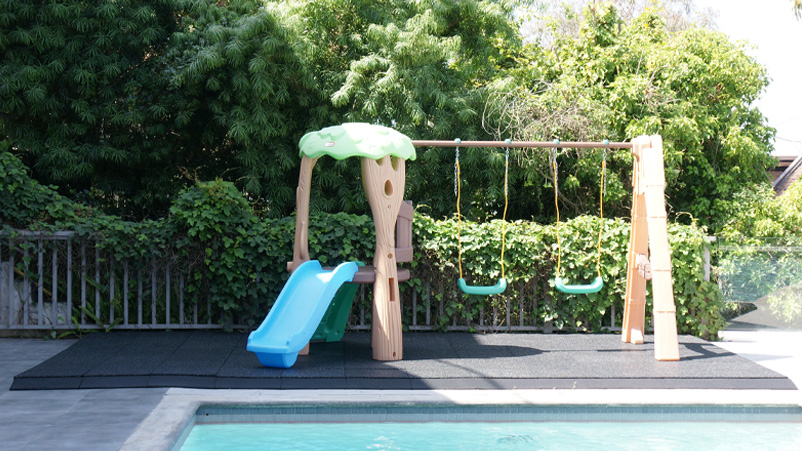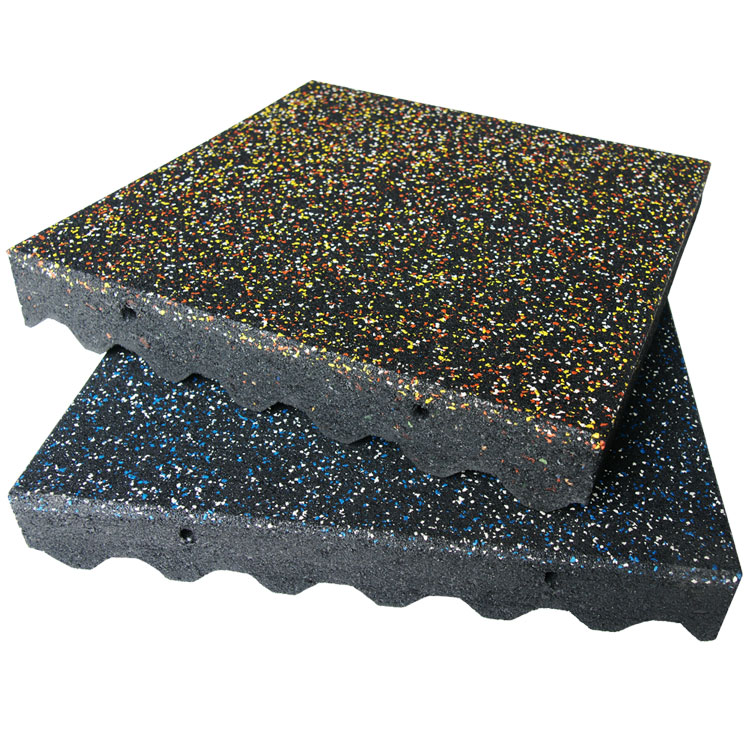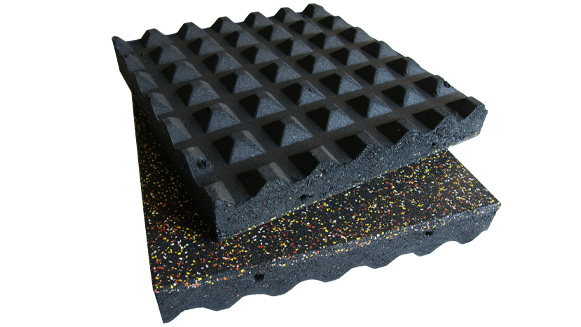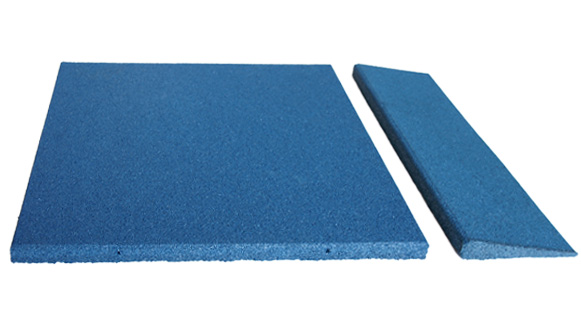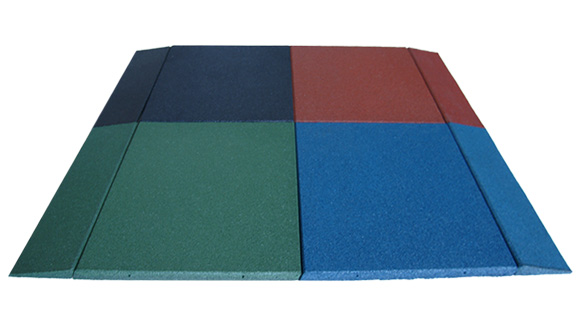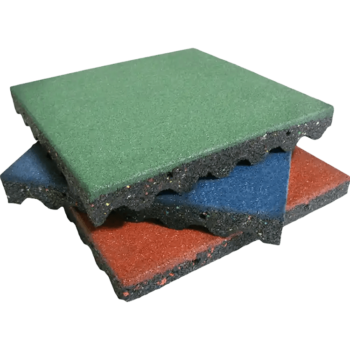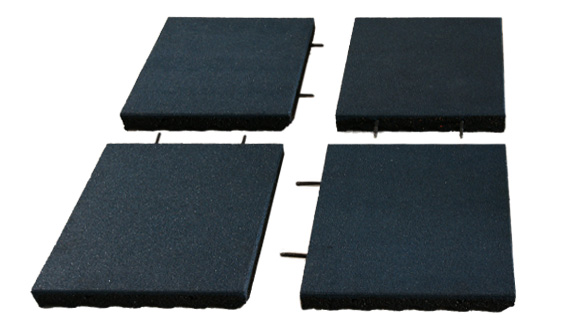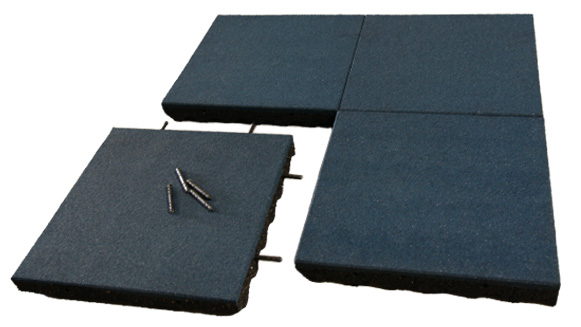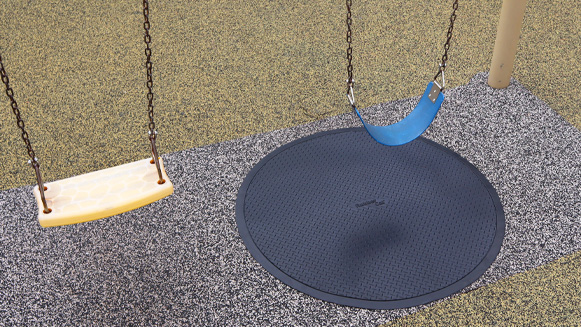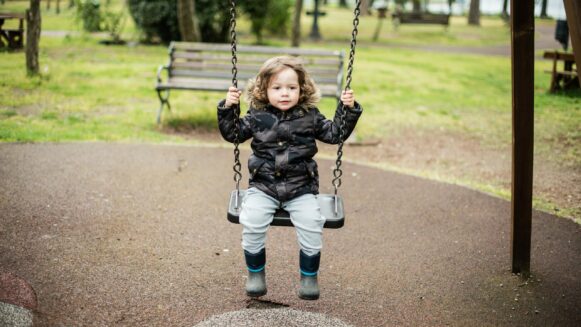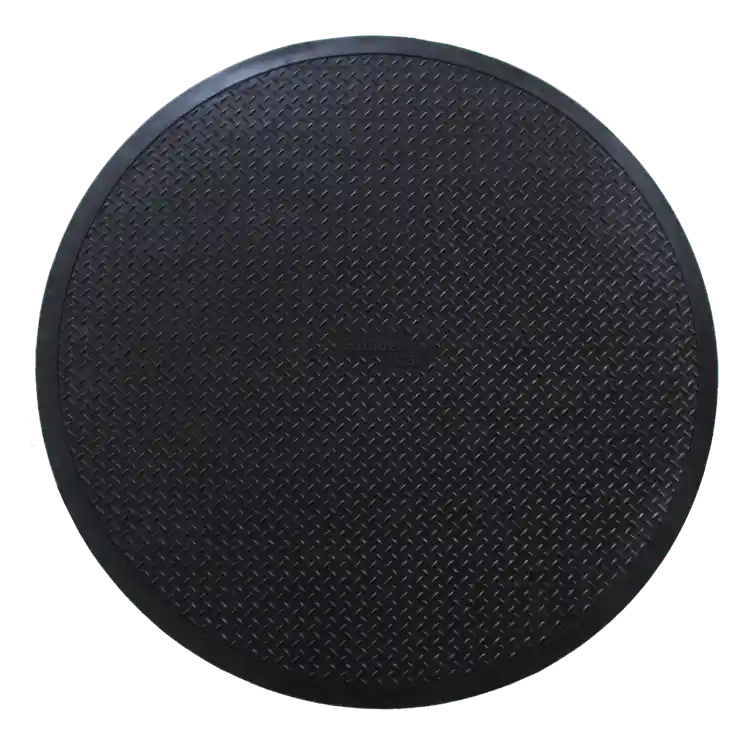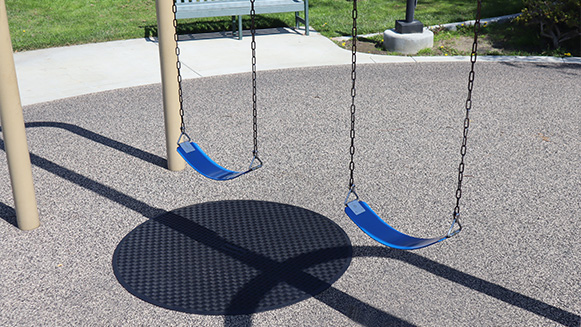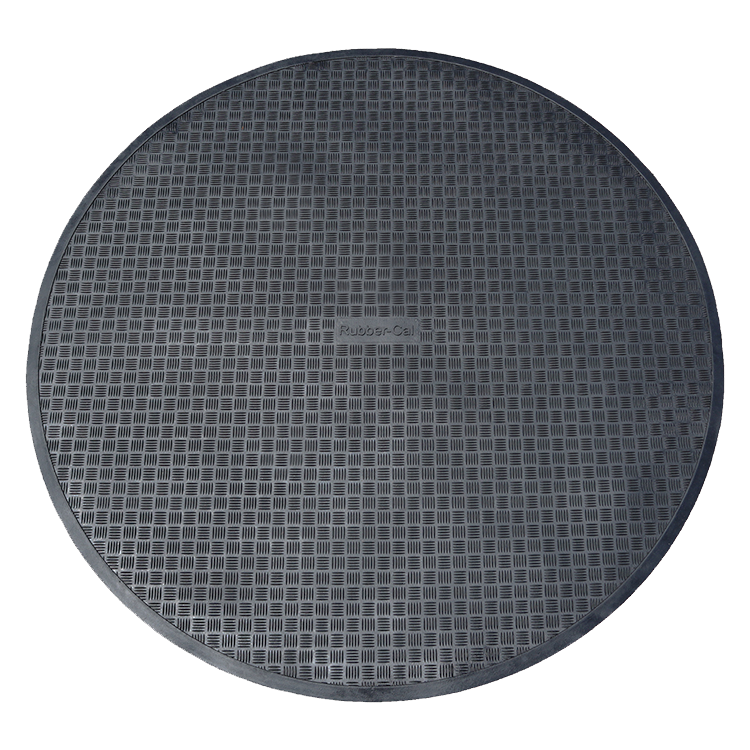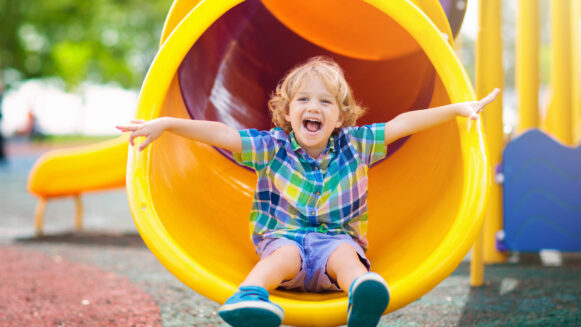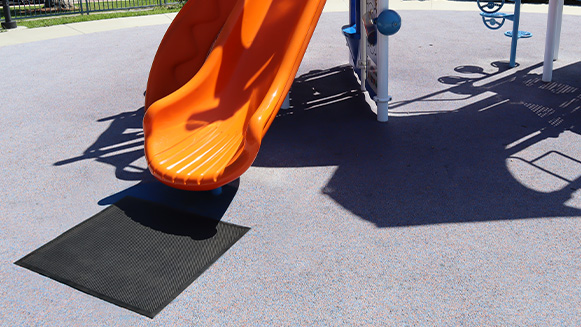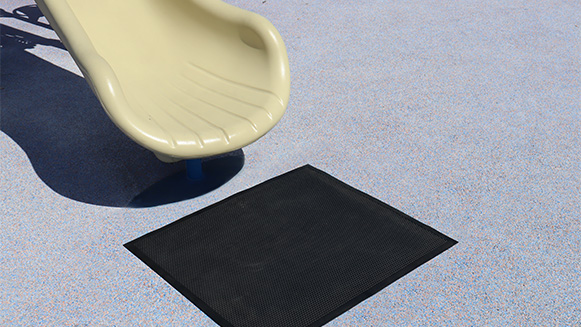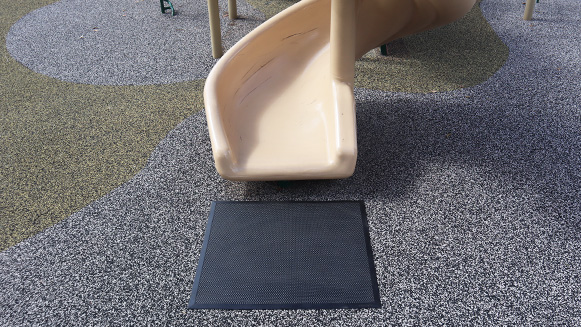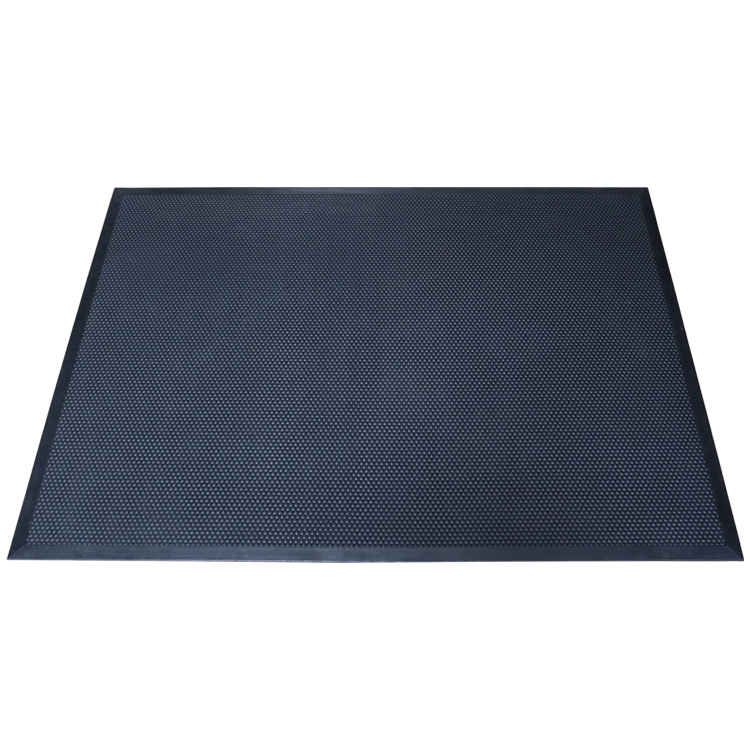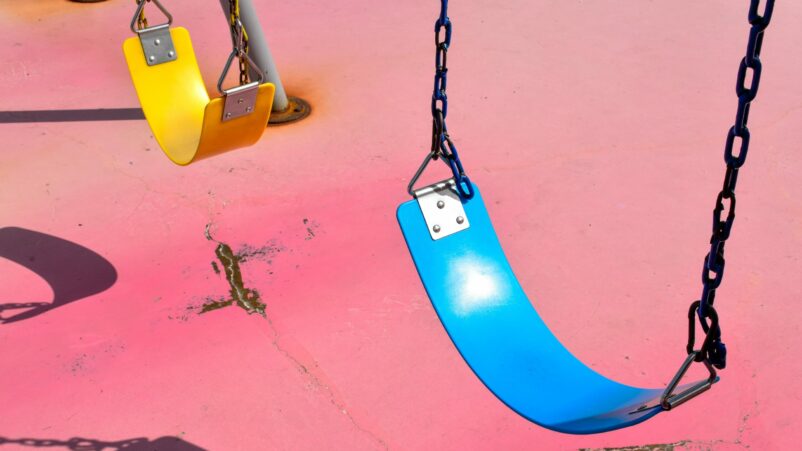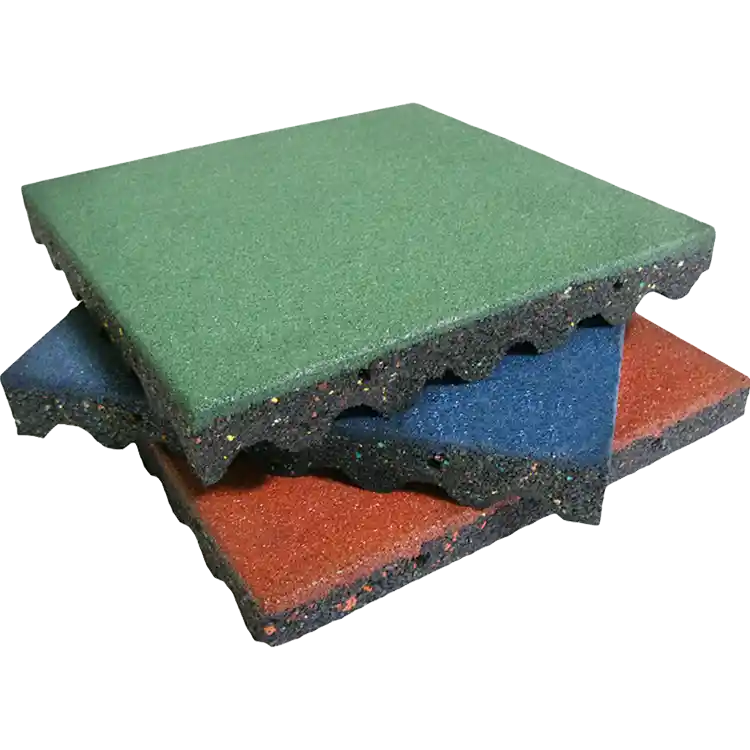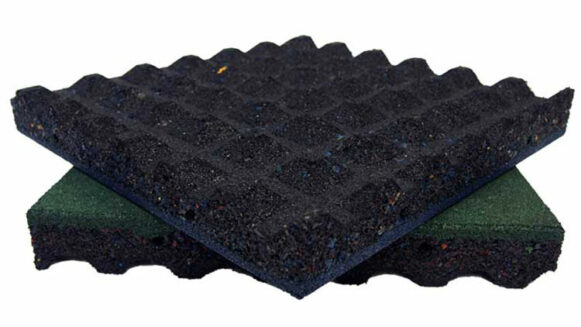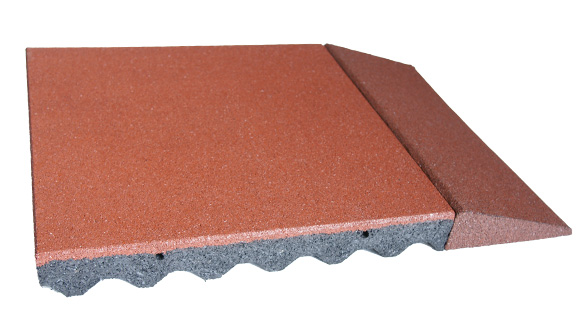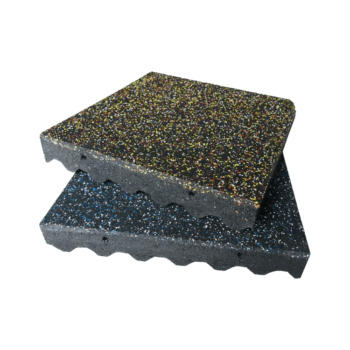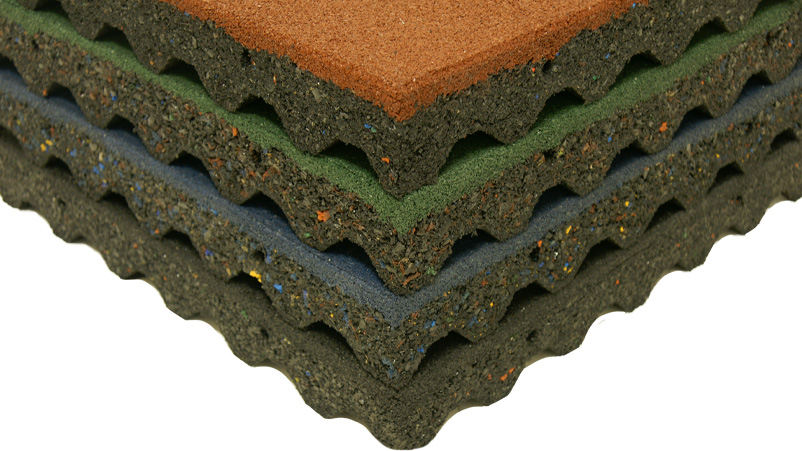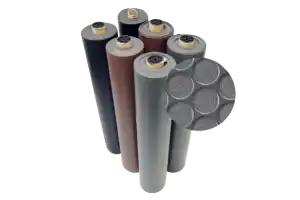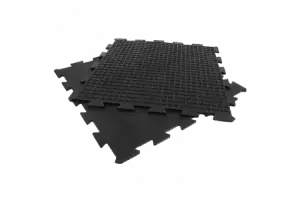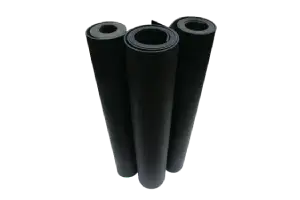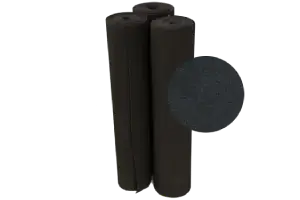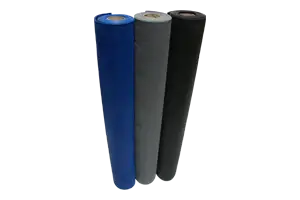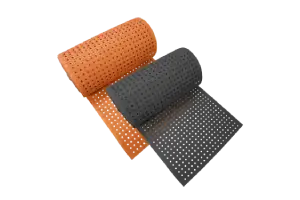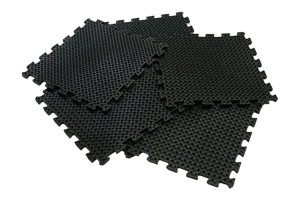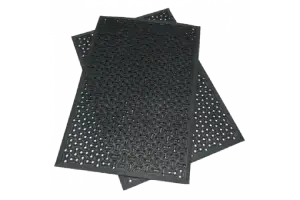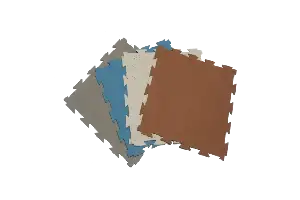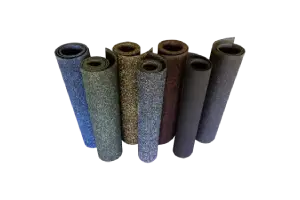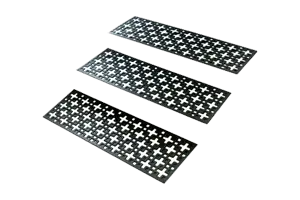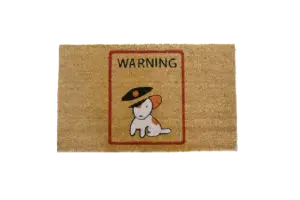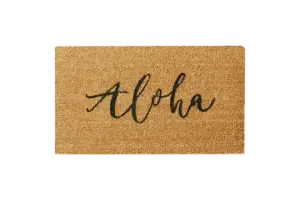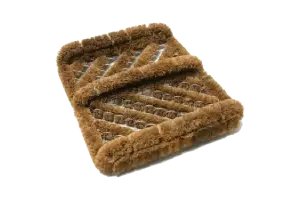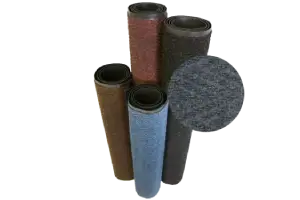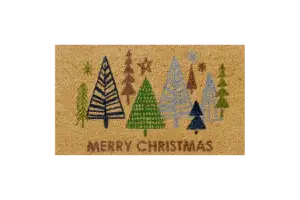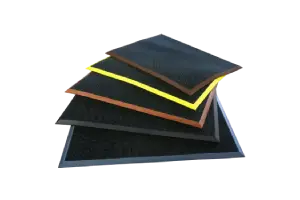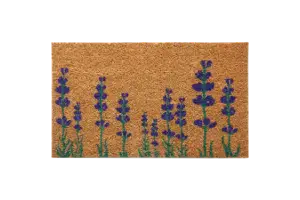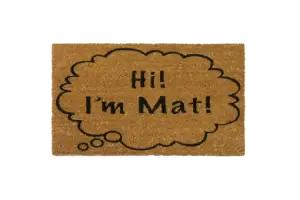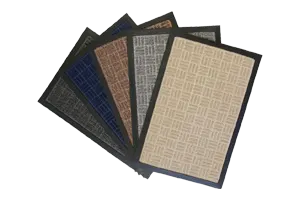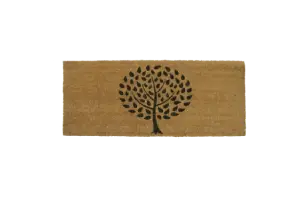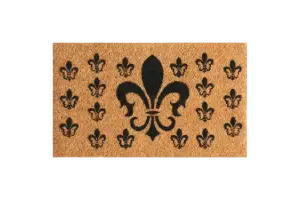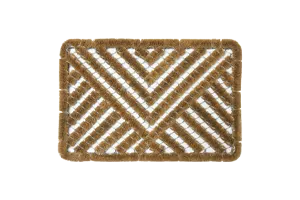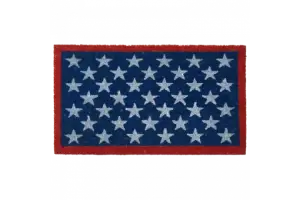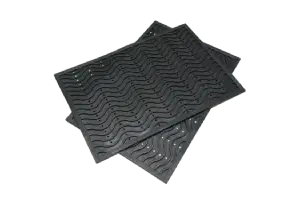Rubber Playground Tiles Buyer’s Guide
Home /
Table of Contents:
1. Frequently Asked Questions About Playground Tiles
2. Playground Flooring Choices Based on Budget, Needs, and Use
3. Installing Rubber Playground Tiles Q&A
4. Why do Playgrounds Need Swing Landing Mats?
5. Why Add a Playground Slide Landing Mat?
6. Critical Playground Safety Concerns
7. Six Best Playground Surfaces Reviewed
8. Pour in Place vs Playground Tiles
9. Foam Tiles vs. Rubber Playground Tiles
10. Loose-Fill Material vs Rubber Playground Tiles
1. Frequently Asked Questions About Playground Tiles
What size are rubber playground tiles?
Eco-Safety rubber tiles come in two sizes: 2.5” x 19.5” x 19.5” and 3” x 19.5” x 19.5”.
The 2.5-inch thick tiles weigh about 25 lbs. per tile while the 3-inch thick tiles weigh about 29 lbs.
The rubber playground floor mats have a waffled bottom surface which allows for a bounce back support and to help facilitate drainage..
How long do rubber tiles of play areas last?
Rubber floor tiles for playground are made from recycled tires and other rubber products. The rubber content in the tiles is 100% recycled content. The tire crumb is then molded by using a polyurethane based adhesive.
When do I need rubber playground tiles?
You will need Eco-Safety rubber tiles for play areas if you have play structures that have fall heights. Eco-Safety tiles are used as playground safety surfacing. If you do not have fall heights that concern you, we offer other thinner and less expensive materials that will cover hard surfaces.
What are the pros and cons of rubber play surfacing?
-
- Rubber Playgrounds Mats’ Pros:
-
- Ultra-durable — Will probably last longer than your playground equipment
- Eco-friendly – Made from recycled tires
- Safety Surfacing – Tested to protect kids from fall heights
- Easy to Install – Available to be installed with plastic pins
- Multiple Subsurface Installation – Can be installed in concrete, asphalt, wood or compacted dirt
- Stationary – Unlike sand, wood chips or rubber mulch, playground tiles stay put. If the play space below a fall surface is not probably filled with loose-fill materials, then it is not effective as a safety surface
-
-
- Rubber Playgrounds Mats’ Cons:
-
- Affordability – Can be expensive for households
-
Why should I use safety tiles for play areas?
You should use rubber surfacing in play areas when play floors safety & durability are your primary goals. You can purchase loose-fill materials cheaper, but they move and need to be continuously raked. If the rubber mulch or sand are not dense in the areas that matter, then they are not effective. Rubber and wood mulch blow away and need to be replenished yearly. That needs to be accounted for when costs are compared.
What do you put under rubber playground safety mats?
If you are installing over concrete or asphalt and the surface is level, nothing is needed below the installation. But, if you are installing over compacted dirt, then adding a weed barrier or a geotextile material that helps reduce vegetation growth is recommended. Local hardware stores carry these in their outdoor landscaping area.
“Eco-Safety 3-inch” Rubber Playground Tiles
- Rubber tiles available in unique speckled color options
- Recycled rubber content qualifies this product as eco-conscious
- Rubber playground mats feature a waffled bottom design for added bounce
3 Inches of Safety: These mats are gifted with a thickness of 3 inches each. This means that kids have 3 inches of safe playground surface rubber to fall on. This is desirable quality to have in any new type of surfacing for playgrounds because safety is paramount in these settings. When compared to the usual types of playgrounds surface such as sand, concrete, and asphalt, rubber is much safer because it is an elastic material that absorbs shock and impact. If someone has to fall, it is much better for him or her to land on rubber than a hard surface like asphalt.
Outside Flooring: Thanks to the recycled tire rubber present in each mat, they are ideal for use in outdoor playgrounds. As an outdoor safety surface, these rubber playground mats will retain their durability in the face of intense UV rays and excessive moisture. A resistance against the outdoor elements is an important feature for any playground flooring to have, and this recycled rubber matting has that resistance in abundance.
2. Playground Flooring Choices Based on Budget, Needs, and Use
Playground mats and tiles may not be the best option for every budget or use. Below we have listed detailed play areas and the types of products that will be applicable to their use.
My Playground has a 7 Foot Fall Height.
Best surface for play area that have a seven feet fall area are the Eco-Safety 3” Thick Tiles. The Eco-Safety 3” tiles have passed the ASTM F1292-13 surfacing material test report for fall height of 7 feet.
My Playground has a 6 Foot Fall Height.
Best playground surface option are the Eco-Safety 2.5” Thick Tiles. The Eco-Safety 2.5” tiles have passed the ASTM F1292-13 surfacing material test report for fall height of 6 feet.
My Playground has no fall zones and I want to cover a concrete floor that kids run on.
There are several options that can be used:
Eco-Sport 1” Thick Tiles: These are 1” tiles and are pretty protective if you are concerned about trips and falls on a floor surface. The one-inch thickness offer a lot of protective material between the foot traffic and hard subsurface below. This is an interlocking rubber tile.
Eco-Sport 3/4” Thick Tiles: The 3/4” version of the Eco-Sport Tiles are a little thinner but should be just as effective at a reduced rate. This is also an interlocking play mat.
Elephant Bark 5mm, 1/4″, 3/8” Thick: These playground matting rolls are made from the same rubber tires materials as the tiles noted above. The prodict is available in a thinner rolled form here. The Elephant Bark is sold in roll form (48-inches wide by any length of to 50 linear feet) and will have fewer seams than tiles. This is a great playground matting for outdoor play areas that do not have large structures.
I am covering asphalt and need a rubber floor that will hide the imperfections of the floor.
Any of the below will work, but keep in mind the thinner the product the less protrusions, bumps and lumps can be covered. No product can remove all of the the imperfections of your subfloors, but they can help smooth of them off.
Eco-Sport 1” Thick Tiles
Eco-Sport 3/4” Thick Tiles
Elephant Bark 5mm, 1/4″, 3/8” Thick
I want something with fewer seams.
Elephant Bark 5mm, 1/4″, 3/8” Thick: The Elephant Bark is sold in roll form (48-inches wide by any length of to 50 linear feet) and will have fewer seams than tiles. This means you only would have seams every 48-inches.
The kids will play with a ball and will want to bounce it on the surface.
Elephant Bark 5mm, 1/4″, 3/8” Thick: this playground matting should work for you, but it will require a hard, compacted subsurface. Install this over concrete, asphalt or wood and it will make a great rubber play floor.
I have an outdoor children slide and I want a rubber mat to protect the landing area of our playground’s slide.
Slide Landing Mat: A great way to reduce damage to your landscaping or outdoor play surface.
Elephant Bark 5mm, 1/4″, 3/8” thick: You can buy this in custom lengths. It is 48-inches wide and you pick the length you want up to 50 feet. This way to decide what size playground slide mats you buy!
I want a mat to protect the landing area of our outdoor playground swing.
Rubber Swing Set Mat 54” Diameter: Circular and perfect floor protection mat to hide those bad patches.
Rubber Swing Set Mat 48” Diameter: a 48” version of the above with a slightly different surface texture.
Elephant Bark 5mm, 1/4″, 3/8” Thick: You can buy this in custom lengths. It is 48-inches wide, and you pick the length you want up to 50 feet. We can cut a rectangular mat out of this roll to your dimensions.
3. Installing Rubber Playground Tiles Q&A
The Official Installation Guide of our playground tiles is very long and thorough and that in itself is enough for an entire webpage. We will leave a link to the PDF file here, so that it can be downloaded. (Playground Tiles Installation Guide)
But here are some highlights and answers to commonly asked questions:
Can the playground installation of tiles be done indoors or outdoors?
Eco-Safey Playground tiles can be installed indoor or outdoor. As long as there are fall heights in a play area, playground matting is needed. The installation methods do not change from indoor to outdoor applications. It is recommended that the tiles be installed over concrete, wood or asphalt or compacted dirt. A hard, level surface is required for the installation of the rubber tiles.
How long do playground tiles last when installed outdoors?
Rubber tiles for play area are made from recycled rubber & tires have extremely long lives in outdoor installations. Recycled playground area tiles get most of their raw materials from recycled tires. Just in the USA, 245 million tires are sent to landfills every year. Tires are driven at high rates of speed and are made to last outdoors, under very abusive settings. They are made from the highest quality rubber products. Playground rubber surfacing have the same outdoor qualities as tires, and are made from super sturdy and will last for years in any type of weather conditions.
Can you install playground tiles without adhesive?
Eco-Sport tiles or the Eco-Safety playground tiles can be installed using either adhesive or by using connector pins. The connector pins are 3” long, made of hard plastic with ferruled edges which hold them in place inside the tile once they have been inserted. The rubber tiles have 2 holes on each of the 4 sides of the tile, resulting in 4 connector pins required per tile. To install your tiles with these connector pins, it is easiest to insert the pins on two adjacent sides while they are sitting in a stack (before you put them on the ground).
Set the tile with pins in it on the ground and adjacent to a tile without pins and push it in to close the gap as best possible. To seal the gap, use a rubber mallet to bang or push the tile (without the pins) in over the tile with the pins. Hit the tile at an angle a few times while trying not to hit the tile itself in the exact same spot (if you use a normal hammer and hit the same spot more than once, you may damage the rubber tile with a dent). There are photos of the pins and the play tiles on this page.
What is the recommended adhesive for Eco-Safety rubber play tiles?
The recommended adhesive is the Masterweld® 941. This product has changed names several times over the years and was formerly known by its BASF name which is Chemrex® CX-941. As of the writing of this piece, Masterweld® has been sold to the Sika® Corporation and we expect the name of the products to change one more time. Regardless of the name, the is a one component, polyurethane-based, trowel-grade, waterproof structural adhesive with vapor reducing characteristics. Its elastomeric properties enable it to move as it expands and contracts. The patented formula is VOC compliant and contains no solvents or water.
We highly suggest that installers stay away from other adhesives, as their association with our tiles are not tested and there is no guarantee on the product if the adhesive used is not the above.
Are there borders available for the outdoor rubber play tiles?
We do not offer a containment or edging, but ramps are offered for the 3” and 2.5” Eco-Safety tiles that bring the height of the tiles down from 2.5” or 3” to 3/8”. Each ramp is the size of the width of one tile.
Can you install playground tiles over grass?
Yes, the rubber playground tiles can be installed over grass or any other landscape. However, it is highly suggested that your ground surface be compacted so that the subsurface is hard and all bumps and troughs are leveled out. In addition, it is recommended that you place a geotextile fabric between the ground level and the tiles so that vegetation growth is stopped.
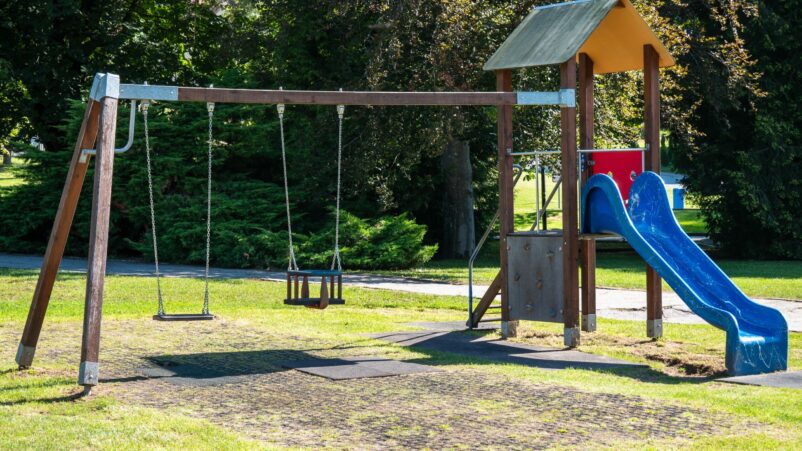
Can you loose-lay playground mats?
Yes, but as noted above, the rubber playground mats will require a containment edging that will keep them in place. If loose-laid it is required that the plastic pins interconnecting the tile be employed. This will help keep the tiles in place. The instructions for this are noted above in the “Can you install playground tiles without adhesive?” section.
What surfaces can outdoor playground mats be installed over?
Rubber playground tiles can be installed over concrete, wood, asphalt or any other hard subsurface. Installing over dirt is possible, however the ground surface will have to be compacted.
How do I cut the rubber playground mats?
The Eco-Safety playground tiles are 2.5” and 3” in thickness. These are really thick rubber tiles. Cutting them is not an easy task. We suggest using a sharp utility knife like a box cutter and a straight edge as a guide. You just need to keep scoring it until you cut all the way through it. Having a bowl of soapy water to dip the blade into will help reduce friction making cutting easier (When cutting using a blade and soapy water, please take the safety measure noted in out installation guide).
4. Why Do Playgrounds Need Swing Landing Mats?
Our swing set mats are made to protect the playground floors. These rubber mats for under swings should not be confused with flooring that protects kids from a fall. Outdoor swing mats are placed on the bottom of swing sets for the sake of protecting the ground from abrasion.
- Here are the reasons to purchase swing landing mats:
-
- Protect your playground’s surface with swing set mats. If your playground floor is grass, then constant traffic can cause both soil damage and impairment to a grass root system. This can lead to a playground with thin grass or bare patches. Swing sets landing areas take a beating from the pendulum of feet going back and forth. Luckily, a rubber mat under a swing can prevent further damage to your lawn or rubber floors. If your playground surfacing is pour-in-place rubber or are rubber playground tiles, the damage caused could be far more expensive. Using an under swing rubber mat preemptively, is a smart investment which will add longer life to your playground surfacing.
- Mark a touchdown location by adding a mat for under a swing landing area. This may seem obvious, but to a novice or someone who may not have been paying attention, landing in the incorrect spot could result in an accident. Marking the swings touchdown or landing position is a great way to direct the playground foot-traffic how to properly use the swings.
- Allow grass or other vegetation to grow by adding a rubber mat for under swing set. One of the best parts of having a nice playground lawn is having a natural and green space to play on. The effects of high foot-traffic on a playground lawn can be felt in two ways. The most significant damage that a swing area causes is compaction. The constant scraping and pounding on the surface of one area is always visibly apparent. There is the obvious swing landing area damage that you can see on top of the surface, things like thin balding patches bare spots. This continuous pounding on the surface causes compaction. The constant compression forces air pockets out of the playground’s soil and these are critical for maintaining microorganisms to survive. Soils that have been compacted cannot hold as much moisture and these compacted soils make it difficult for plants to grow roots. All of the above leads to poor vegetation growth and visibly damaged playground lawn surfaces. A rubber mat under a swing can avert this by adding a layer of protection to the surface of the lawn. A rubber swing set mat is a really inexpensive way to maintain the luster of your playground’s surface.
Rubber Swing Set Mats 48” Diameter
- Excellent weathering characteristics
- Unique circular rubber swing mat design
- Protect subfloors and act as layer surface
- Water resistant and completely water tight
- Diamond-plate surface adds non-slip qualities
Ultra-Durable: The circular rubber mats for under swings are made from reclaimed and SBR rubber. These are high quality rubber products that are designed to last in outdoor conditions even when under stress. Rubber swing set mats will also show excellent wear characteristics and since they are expected to see a lot of abrasion, they are the ideal mat for this application.
Circle Marks the Spot: Circle as a shape is rich in the human experience. Many geometricians and academics have theorized that it is the ideal shape, while theologists have connected it to the divinity, the sun, and the moon. This is a design that stands out and when it is placed in any space, it immediately becomes the focus and marks the spot that it is placed in. Circular playground swing mats benefit from this distinguishing fact. The rubber swing set mats are easy identifiable in any playground and offer aesthetic qualities that cannot be matched.
Rubber Swing Set Mats 54” Diameter
- Water, UV and weather resistant swing set mat
- Circular shape allows this mat to be a distinct focal point
- 6mm thick and 54-inches in diameter circular mat
- Protective outdoor mat for under swings
Water Resistant: Since this rubber mat to go under swing sets is water resistant, it will reduce any moisture acclamation in and around swing landing areas. This will help increase safety by dispersing water and keeping it from accumulating under damaged landscaping. Water collected in one area will always be a slip concern and when on top of landscaped play areas, then it can cause heartache for those who do laundry.
Reduce Damage to Playground Floors: Using rubber under swing set mats will protect the landing areas from excessive abrasion. This circular rubber mat will act as a protective layer to absorb the abrasions caused by rubbing feet onto swing landing areas. By acting as a buffer between the playground floors and foot-traffic, this affordable under the swing mat adds life to your play area floors. Changing or repairing playground surfacing is expensive, while adding in a replaceable rubber mat to protect heavy traffic area is far less expensive!
5. Why Add a Playground Slide Landing Mat?
Playground slides are probably the most used piece of equipment in any play area. Slides can teach kids how to navigate heights and travel along a machine with speed. These may seem like common conceptions for us adults, but for a young child this is a new exhilarating experience. The slide may be flat, or cylinder- or tubular-shaped and the more surface area provided, the safer the equipment. Usually, slides are 6 feet or taller and kids traveling through the tube are going at a decent rate of speed. The type of clothing worn, the weight of the child, and the amount of friction between the body and the slide will affect the speed at which a child travels to the exit point.
A rubber playground slide mat will define the landing area and will make sure there are no sharp to odd objects in the landing area. Rocks, or other debris will stand out if there is rubber mat for a playground slide in place.
Once a child arrives at the end point his or her speed reduces but the kids will use their feet to stop. This will cause friction with the surface of the playground floor below the exit point. The traction at the contact point will cause abrasion. A playground slide mat will help to reduce the damage to the playground floor. Rubber playground slide mats offer a traction surface that will cover up possible bald spots that can be the result of a slide’s foot traffic.
A rubber mat for a playground slide is sometimes an aesthetic investment. Even rubber floors, tiles or poured rubber playground surfacing, can wear from continuous abrasion. Especially colored rubber floors, since generally the top surface of the tile has an EPDM coating. Abrasion is the process of erosion, from scraping and defacement. This can be deliberately inflicted or through heavy use. Adding an extra layer of a wear surface by adding a rubber mat for the bottom of the slide is an inexpensive way to add more life to your playground surface regardless of the type.
Playground Rubber Mat for Bottom of Slides
- Very durable in outdoor playgrounds
- Multiple sizes offer options for any sized slide area
- Landing area surface wear is transferred to the rubber mat
- A completely moisture resistant mat
- Knobbed surface texture adds slip-resistance
Durable Outdoors: Since the rubber playground slide mats are made from natural and reclaimed rubbers, they are designed to last outdoors in any condition. Moisture will not affect this playground slide mat. And being a tire derived product, this rubber mat has excellent weathering characteristics.
Non-Slip Rubber Mat: The rubber playset slide mat is non-slip and will protect oncoming foot-traffic from slips and trips when they exit the slide. Having a non-slip rubber mat at the bottom of the slide will help catch the onrushing feet and decrease slipping accidents. The combination of the high coefficient of friction of rubber and the surface texture of the rubber matting combine to make for a very slip-resistant mat.
6. Critical Playground Safety Concerns
- The number one and most important task is doing a physical check of your playground’s play structures on a regular basis. Without a preemptive action plan to maintain a play area, maintaining safety is difficult. Playground safety should not be a reactive plan but one that is preventative and catches problems before they become safety issues.
- Use the proper type of floor surface. Ensure your playground surfacing is made out of wood chips, rubber or wood mulch, sand, or pea gravel, or rubber safety surfacing.
- If you are installing a commercial or a public playground a lot of things are out of your control. Testing to make sure you play equipment is in good working order should be a long-term commitment. Use it yourself, is it comfortable, clean and secure?
- There is no guarantee that playground equipment will not stay in the same condition on day two of an installation. This is very true for loose-file flooring. Check your play equipment for sharp parts or portions of equipment constantly.
- Look at your swing equipment for open “S” hooks or bulging bolt ends. (S-hooks fasten a chain to swing hangers and the swing seats)
- Check play equipment openings with the potential for head entrapment must be removed or enclosed.
- General hazards like ground or equipment protrusions or shifting equipment should be dealt with.
- Your protective flooring needs to range at least 6 feet in all directions from play equipment. Don’t forget swings go back and forth and the 6 feet needs to cover the space a swing “swings.”
- Make sure that play structures that have fall heights are at least 36-inches apart.
- Get rid of tripping hazards. Don’t assume that natural structures, like tree stumps, are a given. Remove all possible hazards.
- Reduce the possibility of falls by making sure you have rails guarding your fall areas.
- More than 80% of playground injuries are caused by falls. Ensure your playground safety floor is ready to protect. Loose-fill like sand, rubber mulch and wood chips shift constantly and they stop being safety surfaces.
- Make sure your floors are protective. More than 200,000 children are hospitalized for playground-related injuries each year. Most of these injuries are due to falls. Your floor surface must be secure, soft and protective.
- One overlooked matter is the over-exposure to the sun. Through outdoor activities and recreation children can experience moderate to high levels of exposure to ultraviolet (UV) radiation when traversing play equipment. The skin and the eyes are generally the most affected human organs. Ensure that your playground limits playtime at peak sun exposure time.
- Avoid burns. Play equipment can be too hot to touch.
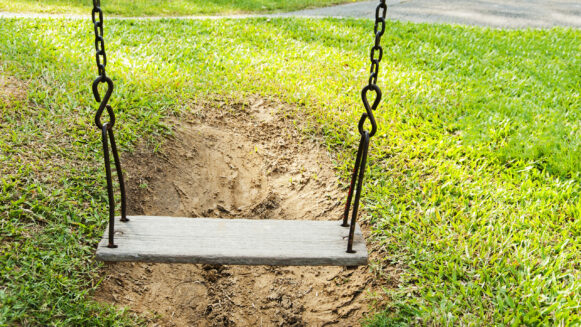
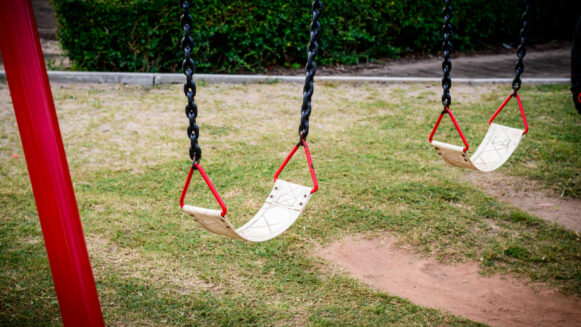
7. Six Best Playground Surfaces Reviewed
What is the best flooring for a playground?
Here is a list our favorite playground flooring from first to sixth below:
First: Rubber Playground Mats – from small or large projects rubber tiles are the best fit due to availability, price, ease of installation, and their safety features. Interlocking rubber playground tiles have democratized the playground industry by making it possible for small projects and homeowners to use the best product on the market.
Second: Pour-in-Place Rubber Surfacing – this is an ideal play flooring for municipal projects. Since this product is heavily dependent on the contracting firm installing the product and it is best for institutions that can vet these firms.
Third: Rubber Mulch — Rubber mulch is also readily available and less expensive. Generally 6 to 8-inch depth of rubber mulch is required for it to be effective. But the rubber mulch, due to its loose-fill nature, does not remain stationary in a playground which reduces its effectiveness. If the mound of mulch is not packed properly in areas that are needed, then the outcome is not one that is good. Constant supervision of the play flooring is expensive and unrealistic.
Fourth: Wood Chips — When the playground wood chips surfacing in heavily used areas become displaced it is not effective any longer. it should be raked back or replaced to maintain correct depth. This requires continuous attention. Play area wood chips require a 6 to 8-inch depth to offer a protective floor surface. Playground wood chips do blow away and get carried out of the play area. This reduces their work life and makes them expensive over time.
Fifth: Sand – Sand even among loose-fill material is the least cushioned material and at 9 inches of depth offer half the fall height rating of wood chips or rubber mulch. Sand is loose fill as well and moves and does not offer a consistent depth after being installed. It is cheap and if you have to go with sand due to budget, then it is better than pea gravel.
Sixth: Pea Gravel – We are not a fan and would not suggest this at all. Pea gravel is typically made of river rock with smooth, rounded edges caused by erosion and natural weathering. These are rocks as the name suggests and that is enough said.
“Eco-Safety 2.5-inch” Rubber Playground Surfacing
- Eco-conscious, made from 100% recycled rubber
- Tested and rated for a 6ft fall height
- DIY installation, simple and quick
Outdoor Floor Covering: Recycled rubber tiles are an ideal choice for use outside because they are made of used tires. Tire are designed to be a long lasting and all-season product, therefore so are these tiles.
Safety Flooring: The most important reason these tiles would be used is when safety is of the highest concern. These comfortable 2.5” thick tiles are rate for a maximum fall height of 6 feet, making them suitable for any play set. With this safety rating, a child is far less likely to suffer from a harmful injury if they fall from an elevated height.
Interlocking Flooring: Instead of dealing with difficult rubber mulch or expensive poured-in floors, consider these easy to install tiles. They can be easily joined together using the unique pin mechanism, which allows the tiles to be put together simply and quickly, in whatever dimensions you need.
8. Pour in Place vs. Playground Tiles
Pour in place rubber and rubber playground tiles are probably the two top types of safety playground surfacing.
Pricing: Playground tiles’ prices are published and offering a bid, or a quote is as easy as logging into your desktop or phone. While for a pour-in-place rubber playground surfacing, getting a bid requires that a contractor visit your facility and then offer a bid. For the tiles, prices are transparent and based on square footage, while for pour-in-place rubber surfacing it is contingent on the type of locations, the landscaping, access to the property and more.
Installation: The installation of pour-in-place playground surface requires a vetted, trusted and experienced contractor. While interlocking rubber playground tiles are “Do It Yourself” products that at the very least can easily be installed by any flooring or landscaping contractor. A competent handyman is just as trustworthy in these cases as well. If the installation does not require adhesive, any homeowner can easily interlock the Eco-Safety playground tiles.
Larger Projects: For larger municipal or county “Parks and Recreation” projects, pour-in-place may make more sense. These are long term contracts that are awarded, and the contracted firm is fully vetted in terms of quality and cost.
Smaller Projects: For smaller public playgrounds, schools, daycares and projects that are rushed the costs of pour-in-place will generally outpace that of playground rubber tiles. Rubber tiles can be ordered and delivered within a week to ten days to most of the United States.
Home Playgrounds: For homeowners the cost of pour-in-place outweighs that of rubber tiles. Most home playgrounds are smaller, with smaller budgets and these playgrounds generally have lower fall heights. For these projects playground tiles are a given.
Stock & Delivery: Rubber playground surfacing in tiles are also far more readily available. The tiles are stocked and can be delivered in days and can be installed immediately after delivery. The availability and the installation of rubber tiles is easy and almost any competent landscaping contactor can manage the installation. There are lots of scenarios where installers may not be necessary which further reduces the cost of the product. While for a pour-in-place bid just scheduling the contractors to review the site and offer pricing may take just as long.
9. Foam Tiles vs. Rubber Playground Tiles
Foam tiles are soft and comfortable on bare feet, but these are not made for outdoor playgrounds. Most foam tiles are not rated for any kind of the drop height. They are not thick enough to protect kids form falls of 6 or 7-feet. A puzzle foam floor mat will not have a long life in an outdoor commercial environment and will quickly be destroyed by the elements and the foot-traffic traversing the playground. For commercial play area foam puzzle mats are a non-consideration.
Children’s foam mats may make sense for some smaller toddler type playsets that are indoors. But for a playground with 6-foot fall heights or higher these are not suggested products. Children’s foam play mats are light and can easily blow away. Foam and sponge flooring is light weight and its light weight makes it susceptible to damage from rocks, heeled shoes, moisture, etc.. They may offer protection from falls when kids are running or jumping, but even then, they tend to move when encountered with foot-traffic. They may make sense in a home with a small plastic playset that is used by one child, but once you leave this category children’s foam tiles should not be considered. Rubber playground tiles and foam tiles are not in the same category of products and should not be compared as equals. Foam tiles are more appropriate for toddlers and for indoor use. A rubber outdoor playground tile is a heavy, durable, and very protective product.
10. Loose-fill material vs. rubber playground tiles
Rubber playground tiles are a far more reliable safety floor than rubber mulch, sand, wood chips or pea gravel. Loose-fill playground materials consist of loose particles such as sand, gravel, engineered wood fibers, or shredded rubber. Just the name comparisons should identify the quality and effectiveness that each offer. Rubber mats are stationary and if installed properly will offer uniform safety protections across the installation. Loose-fill sand or rubber mulch will not be uniform in depth again after being installed. This is especially true in a playground’s heavy traffic areas. They get displaced easily, by feet, wind, rain and more. Per the Consumer Products Safety Commission (CPSC), “once kids travel through the playgrounds’ floors, wood chips or rubber mulch are loose-fill surfacing requiring frequent maintenance to ensure surfacing levels never drop below the minimum depth.” In addition, even though some loose-fill materials are ADA compliant, it is hard to imagine how a wheelchair can access a playground that has rubber mulch or wood chips in it. The compliance requires that the loose-fill mulch be compacted continuously which may not be pragmatic. In addition, per the CPSC’s Document 325 “loose-fill materials will compress at least 25% over time due to use and weathering.” On the contrary playground matting does not move with the wind nor is it reduced in thickness of effectiveness after it is traveled upon. Outdoor rubber playground mats are far more durable since they do not get blown away or removed from the playgrounds.
Loose-fill material is usually used because the consumer assumes it is easier to deal with. The assumption is that you build a containment, add a geo-textile material below the playarea and then dump the sand or rubber mulch on top. Well, that is true, but this also sheds light on nature of the product. Can you trust the sand or the wood chips to be at the proper compaction and depth level that is required if and when an accident happens? We think that consumers opt for loose-fill because of its assumed ease of use, and do not consider the safety limitations of the product.
